If you don’t exercise enough, you gain weight. Not a big deal you might think, because our society is developing in a such way that we increasingly accept rough edges and shapely curves. Unfortunately, that’s not the only consequence of inactivity, however... In this blog post, you’ll find out why exercise is so important for children and how you can prevent your little ones from ending up on the sofa for long periods of time.
It’s a brave new world, where everything is even easier and more convenient than ever before. We no longer travel around the world; the world now pays us a visit at home through our digital devices. We no longer go to the supermarket, but instead have our groceries delivered. We no longer stroll to the mailbox but use an e-scooter instead. We no longer take the stairs, because the escalator is right there next to it. We no longer need to leave the house to have fun because we have streaming services, we do all our shopping online, we don’t even have to leave the house to attend a wine tasting, and we now stay in touch with our friends via chat. This allows us to save massive amounts of time and finally focus on the supposedly important things in life.
And what about our children? Things have gotten very convenient for them, too, because video games, mom and dad’s cell phones, and the TV constantly offer new, even more exciting forms of entertainment. In fact, it’s now possible to turn a child’s room into a virtual tennis court and play tennis, but without having to move much. Our children’s world has changed, not only due to the dominance of digital media, but also due to the enormous amount of traffic on the roads and a well-founded increased concern for safety on the part of parents. Children are driven to school by car – hardly anyone walks anymore. The playgrounds in residential areas are often deserted. The world in which children can move around is gradually becoming more and more limited, and everyday activities are on the decline.
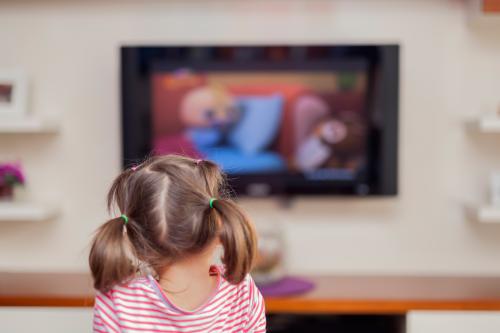
It’s Nice and Comfy Here
At home, children spend most of their time sitting, whether in front of a computer, tablet, or TV. At the daycare center and in preschool, they mostly engage in sedentary activities. They then sit during classes at school, later perhaps at college, then as adults at work, after work with friends at a café, or with their life partner on the couch. They sit in the car and on the subway – because they aren’t used to life any other way. But back to kids. During the time they spend lounging around in front of a screen, they frequently consume fatty or sweet foods – often those they see in ads. It isn’t uncommon for them to become overweight as a result. But that’s not all – time they spend this way is time they can’t spend being active. They just don’t have the time to play and roughhouse with their friends and siblings.
And all of this has devastating consequences – between 40 and 60 percent of first graders have poor posture, suffer from back pain, and exhibit motor deficits; for example, they can barely balance or do a forward roll and often can’t even manage to walk or run backwards. They have problems with endurance, strength, and coordination. And this is where the vicious cycle begins. Because they are no longer as fit, they no longer enjoy physical activities because they are too strenuous, and they can no longer keep up with other, fitter children. As a result, they exercise even less.
But this also affects their mental health, because children who are seldom active often exhibit behavioral problems, have fears, are out of sorts, or even aggressive. Their perception can be affected, and they have difficulty concentrating.
Sedentary across the Board
The lockdowns in 2020/2021 – when children didn’t have PE class or couldn’t play on their sports teams and the number of steps they took each day significantly declined – revealed just how bad a lack of physical activity is for children. A study that looked at the amount of exercise children and adolescents got during the lockdowns concluded that children moved much less than usual; in fact, a quarter of them didn’t move at all. Not only did they gain weight during this time (just like adults), but they also developed knee and back pain because their muscles were inadequately exercised. The number of mental health issues among children also increased.
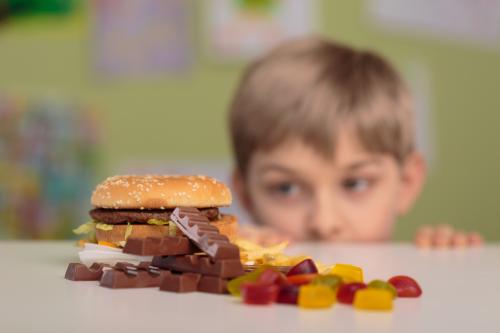
When it comes to children’s physical activity, there are some general differences in terms of social status and gender. For example, girls are less likely to be active than boys. This also applies to children from low-income families. Children who have active parents are also usually active themselves – because they see it modeled by their father and mother. But that’s not the only reason. Parents who get plenty of exercise themselves are, in fact, also more likely to drive their children to practice or other athletic activities.
Exercise Kills? On the Contrary!
What actually happens in our bodies when we play sports or exercise? Our muscles work harder and metabolize more oxygen. Our heart pumps much more blood through our body – which strengthens it and prevents heart attacks. It also allows nutrients to reach our cells more easily. The supply of blood to the organs increases, which means that exercise also prevents inflammation. The body burns more fat and sugar and, in the best case, prevents diabetes from developing altogether. Getting enough exercise can reduce the need to take certain medications, or at least reduce their side effects.
Physical activity reduces the risk of developing colorectal or breast cancer and, if you’ve survived cancer, the risk of it returning. It also prevents bone loss (osteoporosis) because it causes bone mass to increase. In addition, people who exercise a lot are less likely to become depressed because exercise can disrupt negative thinking patterns.
Exercise can even slow down aging to a certain extent. While the speed at which we age lies partly in our genes, a full 80 to 90 percent of the aging process is influenced by our actions and environment. We age as a result of molecular damage accumulating in our bodies. Anything that isn’t repaired becomes a waste product that damages our cells. Exercise, however, acts as a “vascular cleaner” and ensures that fewer waste products accumulate in the first place. Athletic activity does stress the body (just like saunas, by the way), but this isn’t as bad as it sounds, because it allows the body to “practice” and become more resilient to “real” stress, which everyone encounters in their lives. You can extend your life by up to four years overall through exercise, and the risk of mortality also decreases with increased exercise.
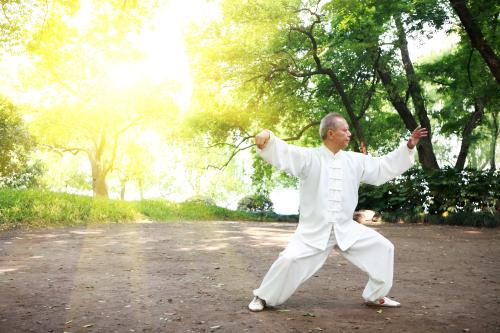
Lifelong Brain Growth
For a long time, scientists assumed that adult brains no longer produce new nerve cells and that the number of nerve cells actually decreases over the course of our lives. It is indeed true that after the first half of pregnancy, the fetus’ brain has completed forming neurons. Nevertheless, in one part of the brain, the hippocampus, new neurons are formed over our entire lives – even into old age. This process is known as adult neurogenesis. The more active we are, the more nerve cells grow. Social interactions at work and with family members have a stimulating effect, as do leisure activities such as reading, learning a new task, or solving a puzzle, for example. Exercise also stimulates neuron growth and keeps the mind fit. Endurance training increases blood flow to the brains of people who exercise regularly; not only does their mood improve, but they can remember things more easily. Their risk of stroke also decreases. The regeneration of nerve cells is probably related to the fact that exercise increases the concentration of growth factors in the blood.
According to Dr. Gerd Kempermann from the German Center for Neurodegenerative Diseases, our brain’s primary function is to enable movement. This is because every thought process ultimately results in some kind of movement, even if only to produce speech – when we talk, we move the muscles in the lower part of our head. This is why cognition is very closely linked to movement, even though the two have been unnaturally disconnected in today’s world – many people hardly move at all because they perform mental activities while sitting at their desks, while others work out on an elliptical machine and are deprived of the stimuli they would have been exposed to while jogging in nature. But it’s possible to do something to counteract this disconnect. When dancing, for example, movement and cognition become one. The result is that we become more alert and can remember things better.
Fit Even before Birth
Exercise already has a positive effect during pregnancy, and not only on the mother. Based on a study of mice, scientists found that 40 percent more neurons were formed in the fetuses of mice mothers who ran in a wheel during gestation than in the fetuses of more sedentary mice.
But what happens if we don’t exercise? We become listless, unmotivated, sometimes even depressed. With increased testosterone levels, depression can turn into aggressiveness. That’s why we should ensure that neurogenesis in our brains continues to function properly throughout our lives, whether through intellectual or social activities or, indeed, through exercise. You see, our nerve cells need a certain level of stimulation – not too much, but not too little either.
Regular exercise is especially important in old age, because after the age of fifty, parts of the brain shrink. A lack of exercise, for example, is also a determining factor in the development of dementia. But executive functions are also not as affected by the aging process when we stay fit. Exercise can stop the breakdown of brain cells. The sooner we start exercising, the better.
The good news for those who want to exercise more is that after just a few weeks of regular physical activity, the body begins to change. And in this context, two and a half hours of exercise per week is enough.
Being Moved
Even passive movement can have a positive effect on the human body. In one study, children with cerebral palsy, a movement disorder caused by an early childhood injury, were moved on vibration plates. This resulted in improvements to their gait pattern and gait speed. The muscles in their feet and calves became stronger and their ankles more flexible.
Because children are still growing, all the benefits of sports and exercise mentioned so far apply to them even more. Renate Zimmer, an educational scientist specializing in early childhood education, found in a study that there is indeed a connection between a child’s motor development, their intelligence, and their level of independence. That’s why exercise plays such an integral role in a child’s overall development.
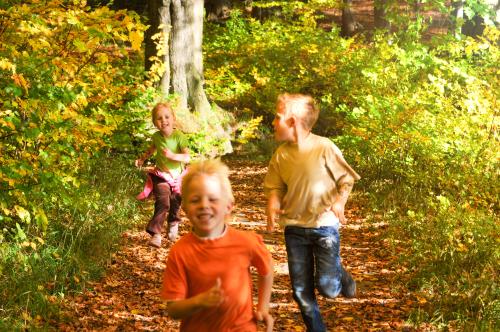
Fit on Every Level
Children need enough exercise because they need to expend more energy to build a healthy body. It is precisely at a very young age that we lay the foundations for our later health. Children that exercise a lot have stronger muscles and stronger bones. Their body is better supplied with blood, their cardiovascular and immune systems function optimally, and their nervous and musculoskeletal systems can develop better. Similarly, exercise also supports organ development. Exercise promotes growth and contributes to good posture.
Physical activity trains motor skills such as balance, speed, and coordination. Children learn basic skills such as running, jumping, hopping, crawling, rolling, climbing, balancing, throwing, and catching almost automatically.
The more they exercise, the more efficient and fit their cognitive abilities become, because regular exercise keeps their brains flexible. They can concentrate better and simply think better because they can process information more easily. Their imagination, creativity, and ability to tackle problems and make decisions all improve. Abstract thinking is easier for them. They develop muscle memory.
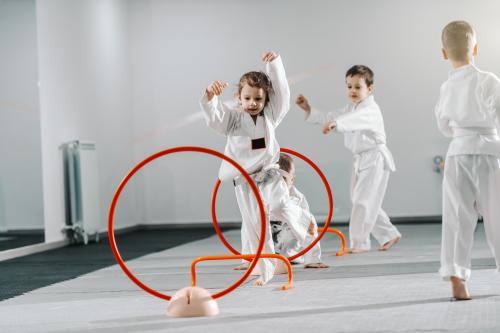
Scientific studies have demonstrated a connection between language development and movement. For example, balancing exercises can be used to help children who have difficulty reading. This is true in other areas as well – if a child’s motor skills are deficient, they will also have difficulty thinking spatially. Children who haven’t learned to walk or run backwards often have difficulty counting backwards as well.
Learning in Motion
Since it is now recognized that movement and learning are interrelated, more and more institutions today are beginning to integrate movement into the learning process. For example, a school in Germany has implemented a concept it calls “learning in motion.” The students move in almost every period, whether it’s during math class, for example, where they sometimes draw the coordinate system on the playground in chalk in order to understand it with their entire bodies. Or during “dynamic sitting,” where each child can choose between a wobble stool, an exercise ball, or a balance cushion, causing them to move slightly throughout the lesson, which automatically makes them more attentive and better able to understand new concepts through the movement. Or during active recess, where children have access to a variety of playground equipment ranging from a basketball hoop to a meditation gong.
In our blog post 1 + 1 + 3 = QUADRO, we highlight another school that specifically promotes movement in the classroom.
Elsewhere, languages are learned in motion – since learning in this case takes place via perception, it’s easier to memorize vocabulary, for example. If we associate a word with a gesture or movement, we have significantly less difficulty remembering it because it activates our procedural memory.
Improved Emotional and Social Development
A child’s emotional development is also influenced by exercise, because physical activity stabilizes their mood and makes them feel good. Children who experience different activities feel a greater sense of achievement and go through life with more confidence overall. At the same time, they train their social skills, as they often participate in physical activities with others. When interacting with each other, they intensify their relationships and become more cooperative, tolerant, helpful, considerate, and attentive. They learn to follow certain rules.
Boys particularly feel a strong need to be active. If they feel drained and bored by our rigidly structured school system, which gives some people little reason to be happy, it can lead to feelings of depression. With an additionally high testosterone level, such as that which occurs during puberty, this, in turn, can lead to aggressiveness. That’s why it’s especially important for boys to participate in sports in their free time where they can really let off steam (like basketball) or where the action is a little rougher (like martial arts or football).
Overall, however, all children have an innate drive to move. Movement gradually opens up the world to them and allows them to discover unlimited possibilities. A child will always seek out new challenges related to movement, whether it’s climbing a tree, running up a hill, jumping around in a puddle, or balancing on a log. In most cases, children will have fun during these playful experiences.
Communication in Motion
One of the ways children express themselves is through movement. Infants, for example, use movement to communicate with their parents nonverbally. Through their facial expressions, gestures, and even simple movements, they show their environment how they are feeling.
Psychomotility
Psychomotility refers to the idea of the unity of body and mind, as the compound term already suggests. It is a holistic view of personal development. The underlying idea is that feelings, thoughts, and actions are inextricably linked. Psychomotor exercises go far beyond mere children’s gymnastics – they are a holistic approach to promote the development of motor, emotional, and social skills. It is a form of education that takes place through movement. In this way, children learn to develop their personality through movement exercises – this applies to both normally developed children as well as those with developmental and behavioral problems.
According to Renate Zimmer, movement encompasses a variety of different aspects:
- Personal function: Children become more familiar with themselves and their bodies and its capabilities and develop an image of themselves
- Productive function: This refers to being active and doing something with their body, i.e., achieving an effect with it (such as by doing a cartwheel)
- Exploratory function: Children learn about their environment and the objects around them with their special properties. They experience physical laws, how things feel, or what sounds they make. When they throw an object, they can watch how it flies and how fast it lands. In the process, children develop what is called functional competence
- Comparative function: This is where children compare and measure themselves against each other, experiencing both victories and defeats and learning how to deal with both
- Adaptive function: Children learn how to cope with stress, learn about the limits of their bodies, and come across ways to extend them – to improve their performance and achieve the goals they have set for themselves or that have been set for them externally
- Expressive function: Children can, on the one hand, act out and process their feelings and sensations through movement, and on the other hand, express them through movement (such as when dancing)
- Impressive function: Not only can you compensate for feelings through movement, but movement also creates feelings, for example joy and pleasure. Children feel energetic or, for example, happily exhausted during physical activity or afterwards
- Social function: Children usually move around in groups, playing together, whether with or against each other. In this case, group dynamics take on an important role – they have to coordinate, perhaps assert themselves, or even back down from time to time. Even if very young children cannot yet relate to each other at all, but only exist side by side, they do learn from each other through observation, by imitating what the other child is doing. In this way, they expand their ability to act and communicate
In the field of psychomotility, children do not merely perform exercises, but can discover the world with their bodies and all their senses – toddlers use their hands and feet to do this. The focus is on their own actions. Children experience that they can move something, namely first themselves, things around them, and playmates. They are active and experience the fact that they can do things. Their self-esteem and confidence grow, also because they realize that they can control their own bodies. They experience themselves as active, independent, and self-determined human beings.
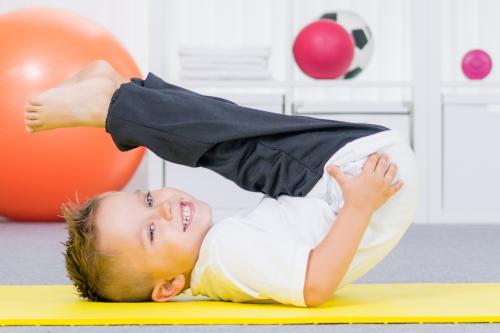
Since the development of physical abilities also influences the psyche, motor exercises can be used to help children who are anxious, fearful, or have little confidence in themselves. They can try things out at their own pace and gain confidence. But the opposite is also true – children who are restless, have difficulty concentrating, or suffer from ADHD, increasingly calm down. Children who have perceptual difficulties, have behavioral problems, have trouble keeping up in school, or have language problems can also benefit from psychomotor exercises. The same applies to children with difficulties in social settings. The exercises offer benefits even to those who do not have much control over their bodies or who seem to be clumsy. And finally, children with physical disabilities or those whose movements are impaired by illness are the intended audience of psychomotor sessions.
Self-Determined Movement, Self-Determined Personality
Psychomotility is not merely about physical exercises; instead, it’s more much focused on experiences. The important thing in this context is to give children free rein to move, allowing them to become active of their own accord – in an environment that fosters their own spontaneous initiative. On the one hand, they themselves have a sense of what is good for them at any given moment or what their body is about to experience or learn and what it needs. On the other hand, they are more well-balanced when the type of movement suits them individually. This independent activity in the spirit of Maria Montessori allows the children to experience and learn more. In this way, the child becomes familiar with self-determined action and can later implement it in various situations.
Since more and more educators are observing that education and learning have a greater chance of lasting success when combined with movement, many daycare centers and preschools, as well as elementary schools, have integrated psychomotor play and movement sessions into their curriculum. The facilities that offer these exercises recognize that physical education plays an important role in a child’s development and that it is the foundation of promoting personal development and good health. In this way, children interact with their environment through their bodies. They gain movement skills, enjoy participating in activities, and view exercise as a natural part of their lives. This attitude usually lasts a lifetime.
Experiential Education
Exercise is also part of experiential education. This educational philosophy focuses on satisfying a child’s natural need for play, excitement, and movement – such as through group experiences in natural settings, for example. Confucius already pointed out more than 2000 years ago that people quickly forget what they’ve been told and that only by applying knowledge do they consolidate it. But Johann Heinrich Pestalozzi, a Swiss educator, also believed that learning should be emotional and practical, not just intellectual.
In experiential education, people step out of their comfort zone – into the learning zone. They do this by disrupting their daily lives in productive ways. They face unfamiliar real-world challenges, such as outdoor physical exercises or those involving interaction, which they then seek to overcome. The focus here isn’t on the action alone, but on participants’ experiences and the lessons they learn. They get to know themselves better and get a sense of where their limits are. The educator who leads the exercises does not take on the role of an educator, but rather of an organizer, observer, and the one who encourages the participants to reflect on the activity afterwards. This is because reflection plays an important role in the process – participants strive to generalize what they’ve experienced, to identify certain recurring patterns, and to translate them into insights. These insights can affect the individuals themselves, their relationships with each other, or their lives in general; they offer an opportunity to change. This is why experiential education also always involves personal development – in and through movement in a natural setting.
Experiential education situations can be a metaphor for the problems we face in our daily lives. An example would be a boat race as a group where the coxswain steers and the crew members must rely on them to lead them in the right direction. The drummer dictates the beat at which the crew rows. Everyone acts in concert. And yet the boat can sometimes veer off course or may not make good progress. Insights applicable to working as a team in everyday professional environments can be gleaned from this situation.
Within the framework of experiential education, learning processes are triggered by experiences and adventures. Participants discover their abilities in an outdoor setting, learn to be proactive, possibly reach their limits, but on the other hand, also develop confidence in themselves and experience what it’s like to function as a team.
Needless to say, children also and especially benefit from experiential education because they, of all people, are in the middle of an ongoing learning process; they are in the process of discovering numerous different things and developing their personalities.
Movement-Focused Daycare
The first movement-focused daycare centers, which initially focused on athletic motor skills, were established in Germany back in the 1970s. In the meantime, the concept has evolved into facilities in which movement, psychomotor activities, and an awareness of the environment play an important role. The point isn’t to produce athletes, but to give every child the opportunity to get to know their body and to teach them to enjoy exercise – so that they can recognize how good it is for them.
If a facility wants to be recognized as movement-focused daycare center, it needs to meet several criteria. For example, the caregivers must have completed a training course with a focus on promoting physical activity. The spaces in the daycare center need to be designed so that individuals can move around freely – and there must be at least one room for exercise. There has to be enough material available that can be included in movement games. In addition, there needs to be sufficient storage facilities for play and sports equipment as well as equipment the children can use to climb, swing, and seesaw. Throughout the day, the children can take part in a variety of physical activities. This can include swimming to ensure that the little ones are safe when in the water – because fewer and fewer children are learning this important skill these days (for more on this, see our blog post A Pool with a Slide: Lots of Fun, Essential to Development).
Movement-Focused Daycare Center Bühren
“Kita Bühren” is certified as a movement-focused daycare center in Germany. It has an exercise room that children can access without supervision. There they’ll find a wall with rungs, a bouldering wall for climbing, and ropes to pull themselves up on, a long bench for their first balancing exercises, various balls for throwing games, as well as a big bouncy ball. Mats and a soft floor invite the children to do gymnastics and fool around, while larger elements and hoops invite them to improvise. The room also features a swing and other equipment. In here, the children can do whatever they feel like doing at the moment. The caregivers let them discover the world on their own but help when a child wants to learn something new – very much in line with the philosophy developed by Maria Montessori[1]. Or they offer suggestions when the little ones just can’t come up with anything to do on their own.
First and foremost, the children practice basic activities at the daycare center – walking, strolling, running, hopping, jumping, climbing, throwing, pushing, and pulling, or rolling objects. They also have many different opportunities to move and explore nature outside the facility. The center has a barefoot path because the caregivers realized that children are increasingly finding it difficult to move on different surfaces. That’s why there are plenty of opportunities here to walk barefoot over moss, earth, wood chips, and gravel – and there’s also a mud pool to wildly stomp around in. The children go on excursions to the neighboring forest and are actually experienced hikers, because the group often goes on short hikes. There are also relaxation and rest periods, of course, because in addition to being active, it’s important to relax and do nothing for a while. The preschool’s daily schedule is flexible in order to give the children as many opportunities as possible to decide for themselves how they want to spend the day.

Running in Circles
In Japan, they’ve taken this one step further. The architect Takaharu Tezuka wanted to fundamentally improve children’s lives and designed a daycare center that was completely open, so that the children could be outside for most of the year. “They don’t dissolve if they get rained on a little bit,” he laughs. Tezuka believes that children belong outside – and he knows that some of them get nervous when they are cooped up inside for extended periods of time. This can’t happen in the preschool he designed, because there is no separation between indoors and outdoors, and none between the individual classrooms. This also means that the classes aren’t separated from each other when it comes to the noise they produce – a decision Tezuka made completely on purpose. According to him, children need a certain level of noise and sleep better at night if they have been surrounded by noise during the day. Experience confirms the theory – the children are indeed highly concentrated during their daily exercises.
Otherwise, however, they romp around the grounds freely, which are arranged in a circle over several levels. They run in circles a lot, and really enjoy doing so. They run away, but eventually come back, naturally. Every day they cover a distance of four kilometers, making them the most athletic kids in Japan. There are three trees on the site that extend into the classrooms or are even located in the middle of a classroom. And the children can climb around on them as they please.
The little ones are not overly supervised or protected, because a minimal dose of danger is good for them. Sometimes they trip or hit their head because not everything is completely childproofed. In this way, however, they learn to navigate the real world, where it’s perfectly possible to trip up and get knocked down, even if usually only in the metaphorical sense. Tezuka is convinced that architecture can change the world. In the preschool he designed, children can at least still be children.
How Often Should Children Exercise?
Children in the US today are only active for about 50 minutes a day. This is far too little. The rest of the day they spend sitting or standing – or even lying down. And yet they should be active for at least three hours a day, regardless of how old they are. For children from the age of four or five onwards, one hour of this time should be reserved for vigorous exercise that leaves them out of breath afterwards.
What Options Are Available for Children to Exercise?
The good news is that kids don’t need much in order to get some exercise. No elaborate athletic equipment, no public playground – not even a yard of their own is necessary. If you give them the opportunity to do so, they’ll come up with their own ideas for games and automatically start moving.
Being Active in Everyday Life
Day-to-day life offers countless opportunities for children be active. This can be anything from simply putting something away, cleaning the dining room table occasionally, taking the trash out, going to the supermarket with their parents, riding their bike to school, or taking the stairs instead of the elevator. Even just squatting down to pick something up instead of just leaning down is enough to exercise their leg muscles.
Free Time
The opportunities to be active outdoors are even more varied. Outdoor games almost always involve movement – kids can play tag or jump rope, build sandcastles on the beach in the summer, race each other, balance on a log, or climb a tree. But nature itself also offers a wealth of opportunities. A child can, for example, collect chestnuts, sticks, stones, or leaves, which they then play with.
Children don’t have to sit around when inside the apartment or house either, they can dance and sing to their favorite tunes, hop on one leg, or build an obstacle course out of old furniture. Or they can take household items that are no longer needed and use them to create their own active play area.

It’s definitely a good idea for parents to exercise along with their children because, after all, they serve as role models – a child with active parents will be more active themselves. Even studies show that children of active parents are themselves more active, fitter, and slimmer than those of parents who move very little or with only one parent that is active. Active parents know from experience how good exercise is for their own bodies and will help their children learn this as well – by going on bike rides with the family, walking to get fresh bread from the bakery on Sundays, or by signing their children up for a sports team.
Activities such as playing soccer, tag, or hiking also strengthen family bonds, as the family experiences moments of happiness together. In addition, it also does many parents good to move more, because they, too, are often quite out of shape.
Step by Step
Adults also have many small opportunities to exercise in their daily lives and at work. Examples include taking the stairs instead of the escalator or elevator, walking to the supermarket or mailbox, meetings held while walking, phone calls that involve strolling around, standing desks, balance cushions, or wobble stools.
Sports
There are so many different types of sports – from ballet and dance classes to gymnastics, track and field, and martial arts, as well as team sports like basketball and soccer. This means it’s very unlikely that your children will not like any of them. Give them the opportunity to try out different programs and first see if they enjoy themselves. It doesn’t always have to be a “real” sport either. You can sign very young children up for gymnastics classes, which train their psychomotor skills. Sometimes children just enjoy going outside and running around to burn off some energy.
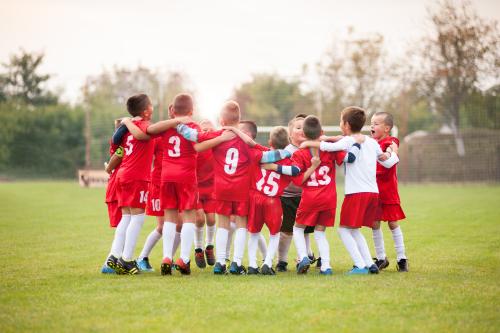
You can watch your kids and see if they prefer to exercise alone or if they enjoy exercise more when they’re with the whole family. Do they prefer to play inside, or do they like to be outside surrounded by nature? What objects do they use to help them play – balls, ropes, scooters? Do your kids prefer quiet forms of exercise like going for a walk or do they really want to work up a sweat doing something like jogging?
The QUADRO Concept
Here at QUADRO, we obviously know of another really great way to get kids moving: the entire product concept of our jungle gyms you can assemble yourself. On the one hand, these promote flexibility in the brain when planning the designs in advance. Then there’s the movement during assembly. And finally, when climbing, another fundamental activity that, like running or jumping, comes natural to children on account of evolution (read more about this in our blog post Jungle Gyms: The Perfect Way to Give Your Children’s Development a Boost). In addition to climbing, they can also balance on it, do gymnastics on it, hop from one panel to the next, swing from bar to bar, or simply hang down.
If children want to learn to stand, walk, and jump, they don’t need any aids. They learn the skills little by little, using only their own bodies. This is usually different when climbing – there are often no trees around to climb, and for the most part, they also pose a danger. This is exactly why children shouldn’t climb on furniture either, besides the fact that it can be damaged. That’s why it’s worth buying a good climbing structure – it gives the children the ideal conditions right from the start.
The good thing about QUADRO is that it never gets boring. This is because it can always be put together in new ways, whether as a traditional jungle gym, a space station, or a sailing yacht. This way, your kids can immerse themselves in different worlds – and simultaneously exercise all on their own. QUADRO is not only about climbing, but just as much about planning, creative design, and, above all, implementation. Preferably together with mom and dad – this way, the family spends some valuable time together.
Even the littlest ones can experience their first adventures in the world of movement with QUADRO, since our product ideas are suitable for children as young as six months old. They can try out their first movements on it, pull themselves up, crawl onto a low climbing ramp, or take their first wobbly steps while holding onto the lower part of the jungle gym. Once they have mastered these first movements, you can build from there – for example by turning the jungle gym into a learning tower so that your children can not only be present during everyday activities, but also actively participate (for more on this, see our blog post Learning Towers – A Playful Way to Increase Self-Confidence). Or you can design your structure completely differently, just the way your children need it at the moment. With countless expansion and modification options, your kids can still exercise on their QUADRO when they’re school age.
With a jungle gym from QUADRO, they can exercise both indoors and outdoors. Set it up in the backyard, maybe attach a slide to it – or a pool – and expand it in whatever way your imagination leads you and you think makes sense for your kids. Or bring your QUADRO into the house or apartment. Thanks to its modular design, your set can be adapted to fit any space. The main thing is that you can use your jungle gym both inside and outside, however you currently prefer. After using it outside in the yard, simply spray it down with a garden hose or clean it with a little dishwashing liquid. That’s all you need to do to remove any dirt stuck to it so that your QUADRO doesn’t give off an earthy smell or leave an unsightly stain on your light-colored living room carpet.
Why Did We Write This Article?
Each and every day, we consider what children need for their healthy development, what will benefit them in their development, and what’s fun for them at the same time. Things that may not be possible in today’s world, such as the ability to climb a tree – but which are still fundamentally important. All these findings flow into our product development process. After all, if you want to design really great toys, you have to know children and their needs extremely well. And we think we’re doing a pretty good job of that.
Here you can read about how French children benefit from movement quite early on in their lives: …and Look how they Move! – The Movement School in France.
↑ Maria Montessori’s guiding principle was “help me do it myself.”
Sources:
- Birkenbihl, Vera. Pauken. Elternnachhilfe. mvg Verlag, 2. Aufl., 2020.
- Handbuch der Bewegungserziehung; Didaktisch-methodische Grundlagen und Ideen für die Praxis Herder, Freiburg 1993
- Schule am Palmengarten
- Takaharu Tezuka: Der beste Kindergarten, den Sie je gesehen haben. TED Talk, September 2014
- Vera F. Birkenbihl: Neurogenese
- Sport lässt neue Gehirnzellen sprießen. Pharmazeutische Zeitung, 12.06.2006
- Sport stärkt Fähigkeiten durch neue Nervenfasern. Spektrum, 18.01.2010
- Bewegung & Neuroplastizität: Das Gehirn – kein Muskel und doch unglaublich trainierbar. Deutsche Zeitschrift für Sportmedizin
- Bewegung fördert die Entwicklung von Kindern. In Form, Deutschlands Initiative für gesunde Ernährung und mehr Bewegung
- Eva Doll. Sportmediziner: So wichtig ist Bewegung für Kinder. ISPO
- Bewegung im Kindergarten: Alles über Bewegungserziehung. Prokita-Portal
- Kinder im Lockdown und der Mangel an Bewegung. hessenschau, 15.02.2021
- Wundermittel Sport: Körper, Geist und Gene profitieren von Bewegung. Quarks, 12.07.2018
- Erziehung und Bildung durch Bewegung - Konzeption zum Bewegungskindergarten der DRK-Kita Bühren. DRK-KV-Göttingen-Northeim e. V., 2017
- Was ist Psychomotorik? Förderverein Psychomotorik e.V. Bonn
- Psychomotorik im Kindergarten – Definition, Ziele und Informationen zur Ausbildung. erzieherin-ausbildung.de. Das Portal für die pädagogische Fachkraft
- Psychomotorik im Kindergarten. Kindergarten heute. Das Fachmagazin für Frühpädagogik
- Sport statt Pillen? – Die heilende Kraft der Bewegung. MDR DOK, 20.08.2021
- Ulrich Lakemann: Erlebnispädagogik. Socialnet, 19.07.2018.
- Dana S. Erlebnispädagogik: Was hinter dem Konzept der sogenannten Abenteuerpädagogik steckt. Kita.de, 14.08.2021
- Christiane Gelitz. Bestimmte Gesten helfen beim Vokabellernen. Spektrum, 25.10.2021
- Prof. Dr. Renate Zimmer
- Die aid-Bewegungspyramide für Kinder. aid infodienst Verbraucherschutz, Ernährung, Landwirtschaft e. V., 2009
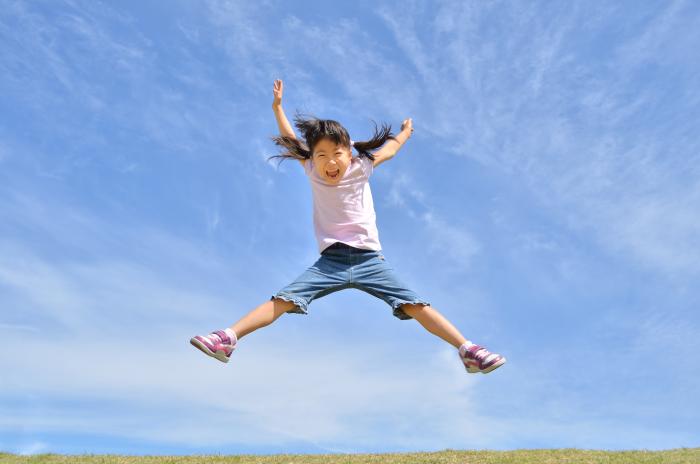
Comments